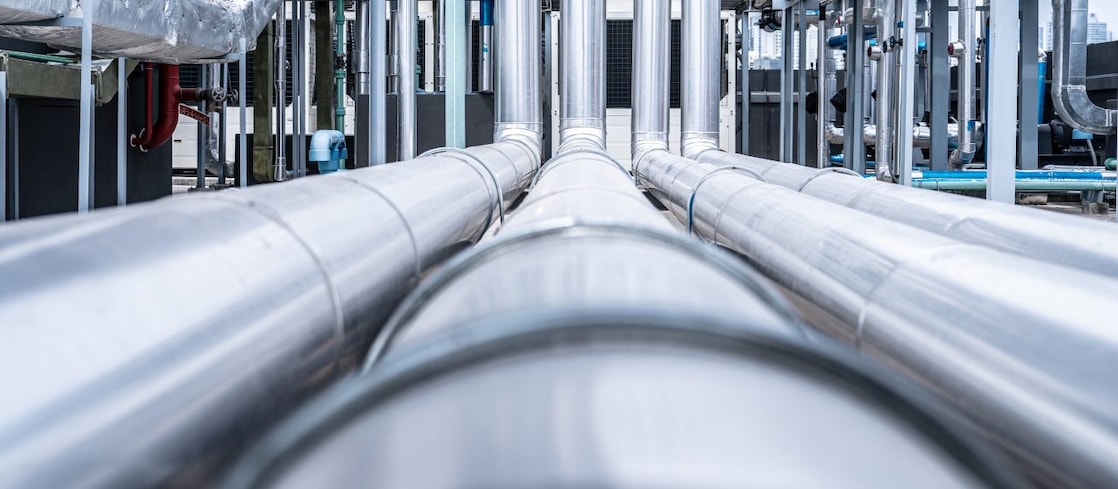
Direct Air Capture (DAC) Projects
Shell is working with DAC companies to identify key pathways required to make direct air capture technologies scalable and commercially-viable. We’re building a foundation for a resilient, competitive carbon removal industry that supports global net-zero targets.

How does direct air capture work?
Direct air capture is a carbon removal approach that uses engineered systems to pull carbon dioxide (CO₂) directly from ambient air. Air is drawn into a system where CO₂ is separated and then either stored underground or used in products like fuels or building materials.
Unlike carbon capture and storage (CCS) methods, which targets emissions at their source (like power plants or industrial facilities), DAC addresses historical emissions already in the atmosphere — making it an essential tool for helping work towards net-zero targets.
Advancing DAC, step by step
Shell is investing in direct air capture technologies at a small scale while evaluating the feasibility of larger deployment in the future. The technology is still in its early stages, and collaboration will be key to future development.

Ongoing DAC projects
Shell is actively evaluating the potential for DAC projects to demonstrate their commercial viability and impact on industrial decarbonisation.
These initiatives will help refine the technology and help create real-world applications for carbon removal.

DAC technology exploration
Shell’s approach focuses on advancing DAC technology through two approaches:
- Internal research and development
- Collaboration with third-parties alongside partners and investors
The goal is to accelerate technology maturity and bring scalable solutions to market.

Value chain and potential
DAC technology can play a pivotal role in global decarbonisation efforts, helping offset emissions from hard-to-abate sectors and providing a sustainable alternative source of carbon.
Shell sees promise in DAC technology, but also acknowledges that realising its full potential will require overcoming significant challenges to achieve commercial viability.

DAC technology and innovation
Recognising the early-stage nature of DAC technologies, Shell is collaborating with industry leaders, policymakers, and technology providers to explore multiple approaches in parallel.
We are actively pursuing pathways to make DAC technologies one of the enablers of global 2050 climate targets. Realising this potential will require integrating technical expertise, operational capabilities, and collective action across sectors.
DAC is not a stand-alone solution but a key part of Shell’s broader carbon dioxide removal (CDR) strategy — and we’re already putting it into action.

Scaling DAC technology with the Pelican Gulf Coast carbon removal project
As part of the Pelican Consortium, Shell is collaborating with Louisiana State University, University of Houston, and Mitsubishi Corporation in leading the development of a DAC hub in the Baton Rouge-New Orleans corridor of Louisiana in the United States of America.
The Pelican Gulf Coast Carbon Removal Project, also known as the Pelican Direct Air Capture Hub, aims to assess the feasibility of developing and scaling DAC technology. The Pelican DAC Hub’s goal is to eliminate around 1 million tonnes of CO2 from the atmosphere in the future.
In 2023, the consortium was awarded grant funding from the U.S. Department of Energy to conduct feasibility studies and demonstrations while assessing infrastructure needs and community impacts.
Developing a successful DAC value chain
Each step of the DAC value chain — from CO₂ capture to sequestration or utilisation as feedstock — must be optimised for efficiency, scalability, and sustainability to ensure DAC technology can effectively contribute to global decarbonisation efforts.

Lifecycle analysis
Shell applies lifecycle analyses (LCAs) to better understand and continuously improve the carbon removal performance of direct air capture projects — evaluating energy use, material outputs, and total environmental impact.

Protocols and requirements
Shell is building its carbon removal efforts to align with evolving regulatory frameworks and protocols.
In partnership with stakeholders and industry leaders, Shell strives to lead in delivering transparency and credibility in carbon removal accounting.

Nascency of the market
While DAC technologies are still emerging, there is already significant interest from carbon markets.
However, achieving commercial scale requires continued investment, supportive policies, and technological advancements.
“Advancing carbon management technologies is a critical part of the energy transition, and effectively scaling this technology will require continued collaboration, discipline, and innovation.”

Shell DAC Business Manager
Maximising DAC impact through lifecycle analyses
Shell evaluates the full environmental footprint of the DAC process through lifecycle analyses (LCA). These assessments help determine the potential for DAC to contribute to net-zero goals by examining:
Energy use
measuring power consumption and prioritising renewable sources where feasible
Materials and resources
evaluating the sustainability of key components and opportunities to minimise waste
Water and land needs
understanding resource demands to optimise efficiency
CO₂ transport and storage
assessing approaches to securely and effectively manage captured carbon

Supporting responsible scaling
By conducting LCAs, Shell and its partners aim to refine DAC technologies, improve resource efficiency, and support the responsible scaling of carbon removal solutions. Where applicable, project outcomes are intended to be independently verified and registered by third parties to help ensure transparency and credibility.
Learn more about Shell DAC commercial and technology projects
Discover more information related to DAC, CCS, and other carbon reduction technologies.

The Energy Podcast
Listen and subscribe to the Shell podcast where we discuss topics from renewable energies to artificial intelligence.

The Northern Lights project
Learn how cross-industry collaboration is unlocking large-scale CO₂ transport and storage to accelerate emissions reduction today.

Shell CCS
Discover how Shell is scaling carbon capture and storage (CCS) technologies as a strategic lever for the energy transition.